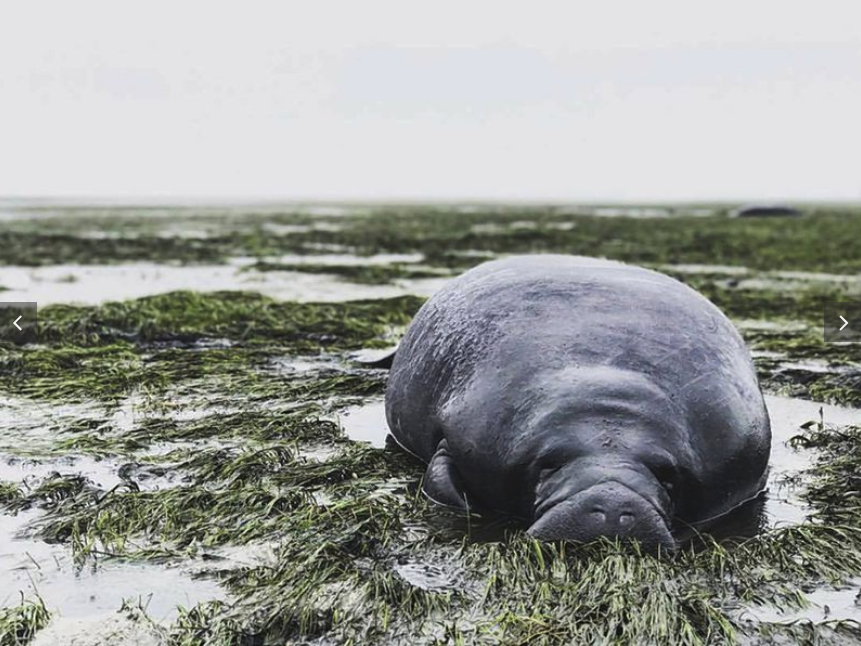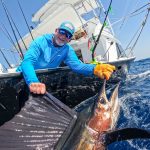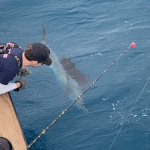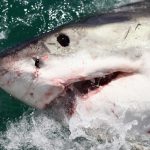Article Courtesy: Orlando Sentinel | By: Joe Mario Pedersen | Originally Published: Sept 20, 2019 | Please click here for original article.
Hurricanes have great impact on land but they can be equally as destructive to aquatic environments, according to the National Oceanic and Atmospheric Administration.
When a hurricane makes landfall it comes with a series of familiar images.
Power is lost. Water floods the streets. Powerful gusts knock down trees and lift roofs.
But what most people don’t see is what happens beneath the sea after a hurricane passes.
The power of hurricanes can cause fish populations to vacate an environment. Powerful surges of underwater current can uproot and destroy coral colonies. The churning of water can completely alter the oxygen and salinity levels of an area.
Hurricanes derive their fuel from warm ocean waters. As they gain more power they churn the water underneath, forcing an upheaval of cold water from below.
One of the many notable options from a hurricane’s array of destructive tools is a storm surge. While effective on land, storm surges can be ruthless under the sea.
Storm surge energy is so powerful that currents have been detected up to 300 feet below the surface, according to the NOAA.
As a result of the coming forces, animals such as sharks can detect the change in barometric pressure storms give off and swim away long before the storm arrives, said Stephen Kajiura, a professor of marine biology at the Florida Atlantic University.
“The change in barometric pressure is their cue to leave and say ‘uh oh. Someone is coming,’” Kajiura said. “They headed out to deeper water and try to stay away from the swell.”
It’s what he believes probably happened before Hurricane Florence struck North Carolina, where a large population of blacktip sharks hunt during the same time of the year.
Data on shark behavior prior to storms is lacking, however a study of the Mote Marine Laboratory in 2003 found blacktip sharks behaving exactly in this manner before Tropical Storm Gabrielle passed in 2001 near North and South Carolina.
As Gabrielle moved east, blacktips were recorded swimming far beneath the layer of water they are normally associated with and didn’t return until the the storm’s passing.
Not all sea creatures get the memo though.
In 1992, researchers with the U.S. Geological Survey found an estimated 9.4 million saltwater fish, valued at $7.8 million, were killed after Hurricane Andrew passed through South Florida.
The cause of death is not entirely clear, but the theory is that they suffocated, the USGS. said.
Strong hurricanes can churn up cold water from far below the ocean where oxygen is low, or hypoxic. The cold hypoxic water mixes with the warm upper layer and leaves the area without proper oxygen suitable for marine life.
Sometimes an area can be deprived for weeks without oxygen, said Nancy Rabalais, a professor in Louisiana State University’s Department of Oceanography and Coastal Sciences. Rabalais has measured oxygen levels for many years in areas concerning hypoxia.
“Low, and extremely low dissolved oxygen levels can persist for weeks, and months at a time,” she said. “The dissolved oxygen may rise immediately. It then takes about a week in summer for the stratified water column to re-establish and for the oxygen to go back down due to respiration of bacteria of organic matter fallen to the sea bed from productive surface waters.”
While Hurricanes can wreck the balance of an environment not all of the destruction is bad. In some cases hurricanes can be pretty helpful. Tropical phenomenon have caused a number of strangely recorded incidents around the southeastern coastline.
Hurricanes Frances, a Category 2 storm, and Hurricane Jeanne, Category 3, made landfall in 2004 in the southern region of the Indian River Lagoon on the east coast of Central Florida.
The storm’s impact had a huge influence over the environment of the diverse estuary, which is home to 2,200 marine and freshwater species, according to the Florida Fish and Wildlife Conservation Commission.
The FWC conducted a survey of the area after both storms passed and found oxygen levels were greatly reduced and the level of salinity dropped from 26 percent to 15 percent, the FWC reported.
Most species classified as stationary marine life died in the experience. Marine organisms able to swim relocated.
However, the lagoon did see huge increases in freshwater species, the FWC reported. About 6 percent of the species calling the lagoon home identified as freshwater organisms. But after Jeanne passed, freshwater inhabitants increased by 32 percent because of the ideal freshwater conditions created by heavy rainfall, FWC found.
The freshwater conditions persisted for several weeks after Jeanne.
Another strange incident occurred after Hurricane Katrina hit Louisiana in 2005 where the birthrate of dolphins exploded off the coast of the Pelican State, according to an article by Scientific American.
A huge boom of baby dolphins was observed in 2007 within Louisiana waters. Researchers found that more dolphins were surviving infancy because there was more food available off the Louisiana coast. The reason: Hurricane Katrina destroyed Louisiana’s fishing industry by sinking many of its boats. In summation, Katrina destroys boats, dolphins inherit the fish.
But fish and dolphins aren’t the only organisms to benefit as hurricanes can have a profound effect on coral reefs as well, according to the NOAA. With oceanic waters getting warmer, coral reefs experience thermal stress that leads to the algae inside the coral’s tissue to be expelled or to die, this creates the phenomenon known as “coral bleaching.”
A small hurricane can bring much needed relief to overly heated coral; providing cooler waters and preventing the bleaching from happening. Although it’s a fine line between a small hurricane and a Category 3 major storm that could reduce reefs to rubble, the NOAA reported.
“Coral reefs have experienced these effects of hurricanes and survived for millions of years; however, in light of the rapidly changing climate, the ability of corals to recover from severe storms, while facing the combined effects of increasing thermal stress and ocean acidification, could be extinguished,” the NOAA said.
This photo provided by Michael Sechler shows a stranded manatee in Manatee County, Fla., Sunday, Sept. 10, 2017. The mammal was stranded after waters receded from the Florida bay as Hurricane Irma approached. (Courtesy: Michael Sechler via AP)






